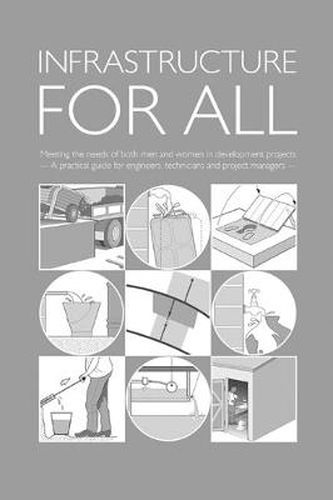Readings Newsletter
Become a Readings Member to make your shopping experience even easier.
Sign in or sign up for free!
You’re not far away from qualifying for FREE standard shipping within Australia
You’ve qualified for FREE standard shipping within Australia
The cart is loading…






This book has been produced to help engineers, technicians and project managers ensure that the facilities they design and build are beneficial to all members of society. Using many examples, especially related to water and sanitation, the book demonstrates that ‘one size does not fit all’. It shows how women, men and children frequently have different needs and different priorities because they use infrastructure in different ways. It explains how the community that will use the infrastructure is generally structured by inequalities of various kinds and without analysis of social issues an intention that the facility should serve the needs of all is not likely to be realized. The book seeks to make gender analysis intelligible to engineers working at the project level; to enable them to co-operate with social scientists, and to increase their awareness of the need to work with women and men in the user community. The book emphasizes the practical ways in which taking account of gender relations will improve the design, implementation and use of infrastructure. With this in mind, it is focused on what civil engineers actually need to know to improve their projects, to give the ‘civil’ aspects of their work equal weight with the ‘engineering’ aspects. This book will be of great interest to all engineers, technicians and project managers concerned with infrastructure development in low- and middle-income countries.
$9.00 standard shipping within Australia
FREE standard shipping within Australia for orders over $100.00
Express & International shipping calculated at checkout
This book has been produced to help engineers, technicians and project managers ensure that the facilities they design and build are beneficial to all members of society. Using many examples, especially related to water and sanitation, the book demonstrates that ‘one size does not fit all’. It shows how women, men and children frequently have different needs and different priorities because they use infrastructure in different ways. It explains how the community that will use the infrastructure is generally structured by inequalities of various kinds and without analysis of social issues an intention that the facility should serve the needs of all is not likely to be realized. The book seeks to make gender analysis intelligible to engineers working at the project level; to enable them to co-operate with social scientists, and to increase their awareness of the need to work with women and men in the user community. The book emphasizes the practical ways in which taking account of gender relations will improve the design, implementation and use of infrastructure. With this in mind, it is focused on what civil engineers actually need to know to improve their projects, to give the ‘civil’ aspects of their work equal weight with the ‘engineering’ aspects. This book will be of great interest to all engineers, technicians and project managers concerned with infrastructure development in low- and middle-income countries.